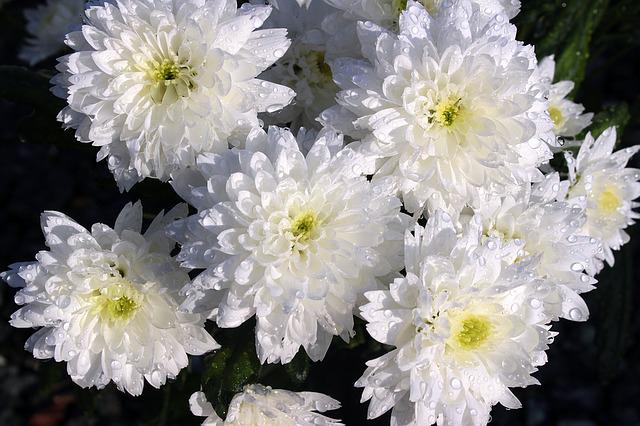Are Chrysanthemums Poisonous? Know What Makes Chrysanthemum Not Safe

While chrysanthemums may be a well-known flower in the world, they are still considered poisonous. Chrysanthemums have pyrethrum, a toxin that may be transformed into pyrethrin and used as an insecticide. This practice dates back thousands of years. Chrysanthemums also contain sesquiterpene lactones, compounds that can cause severe allergic reactions in some people. Chrysanthemums are poisonous to humans and animals, and allergic reactions to them can be fatal.
Chrysanthemums can be poisonous in different ways. Some people may experience allergic reactions if they consume chrysanthemum flowers, while others could become ill if they eat the fruit or juice of chrysanthemums. Some people have become sick after consuming tea made from chrysanthemum leaves. However, most reported chrysanthemums incidents have not led to severe injuries or fatalities. On the other hand, animals like deer typically do not eat chrysanthemums because they are known to be deer-resistant plants.
Table of Contents
Symptoms of Chrysanthemum Poisoning
Consuming a chrysanthemum flower can lead to symptoms consistent with poisoning in people. Here is the list of symptoms:
- Burning stinging skin
- Blisters
- Hives
- Respiratory distress
- Irritation of the mucous membranes
- Dizziness
- tingling or numbness in the face (altered skin sensations)
- Skin that itches and is also burning
- Nausea
- Vomiting
- twitching of the muscles
- Headache
- Fatigue
- Salivation
- accumulation of fluid in the lungs
- Seizures may occur
How to Recognize and Avoid Poisonous Chrysanthemums
When humans work in the garden and handle chrysanthemums, they risk developing a skin condition known as contact dermatitis. When working in the garden, wearing gloves is always suggested to prevent swelling. This ailment causes discomfort and pain, although it is not toxic. Removing toxicity by processes such as cooking or frying is one reason herbal tea is believed to be risk-free. The medicinal value of plants cannot be overstated, yet, any herbal remedies must be obtained from a trustworthy business. When combined with the chrysanthemum, some food combinations, such as pork, chicken, and celery, can also be hazardous.
Perithrin is a naturally occurring insecticide that is produced by the flower. When canines and felines chew on chrysanthemum blossoms, they risk exposure to the pesticide permethrin. As a result of permethrin’s influence on the animal’s nervous system, chrysanthemum poisoning can cause the victim to exhibit various symptoms, including trembling, nausea, and coughing. The animal may get better, but it’s best not to leave the flowers anywhere an animal could come into contact with them.

Is Chrysanthemum Toxic to Animals?
Dogs
Dogs should not eat chrysanthemums. They will make people feel sick in the same way that poisoning does. They are likely to have an allergic reaction to the plant’s lactones. If your dog eats a chrysanthemum, you should take it to the vet immediately.
Cats
Pyrethrins are much more dangerous to cats than dogs, so chrysanthemums are very dangerous. When people use a dog spot-on with permethrin on their cat by mistake, it can poison the cat and sometimes kill it.
When cats overeat chrysanthemum, they get neurological signs, tremors, seizures, coma, and die.
Birds
Some pyrethrins made from pyrethrum can be used to keep ticks and fleas away from dogs or kill them. Permethrin is an excellent example because it is often sold as a spot-on treatment or prevention for parasites. Birds should not eat chrysanthemums. If a bird eats any part of a chrysanthemum, the lactones in the plant cause the bird’s tongue and mouth to burn and swell. A person may also feel dizzy, have diarrhea, or have problems with their nerves.
Horses
A horse can get sick from eating any part of a chrysanthemum plant. It irritates the stomach, which can lead to colic, which can be fatal for horses. There is also nerve damage, which makes muscles twitch, shake, and tremble.
Blood can pool in the liver, kidneys, and lungs, damaging the organs and making breathing hard. Chrysanthemums cause lesions in the intestines, liver, kidneys, and lungs when exposed for a long time. Long-term exposure could also make someone go blind.
Fish
When chrysanthemums or pyrethrins accidentally get into waterways, they hurt all fish. They are very dangerous to fish, and if pyrethrin gets into a river, it can wipe out an entire ecosystem. Pyrethrin and, by extension, chrysanthemums can kill tadpoles, which do so quickly.

